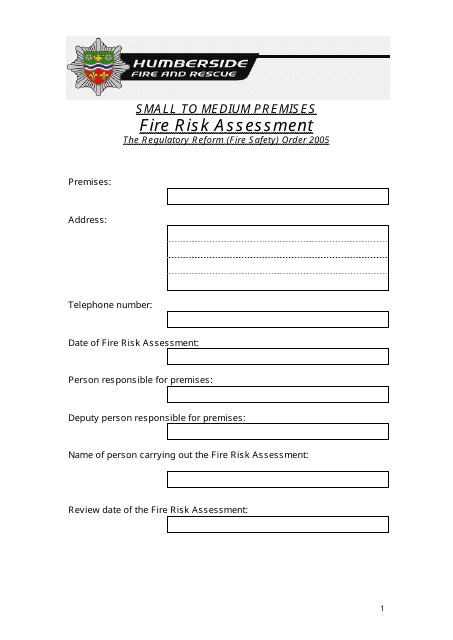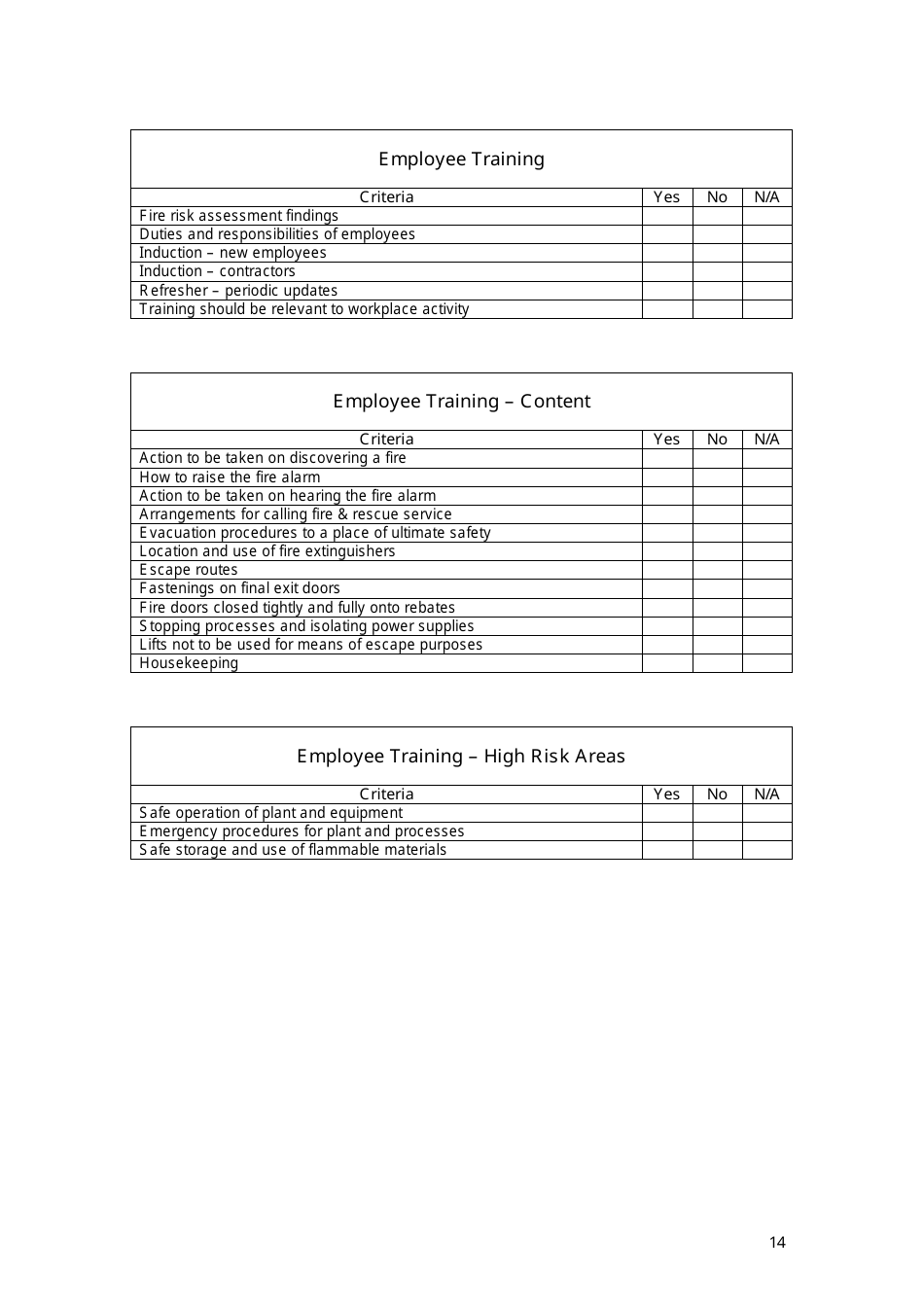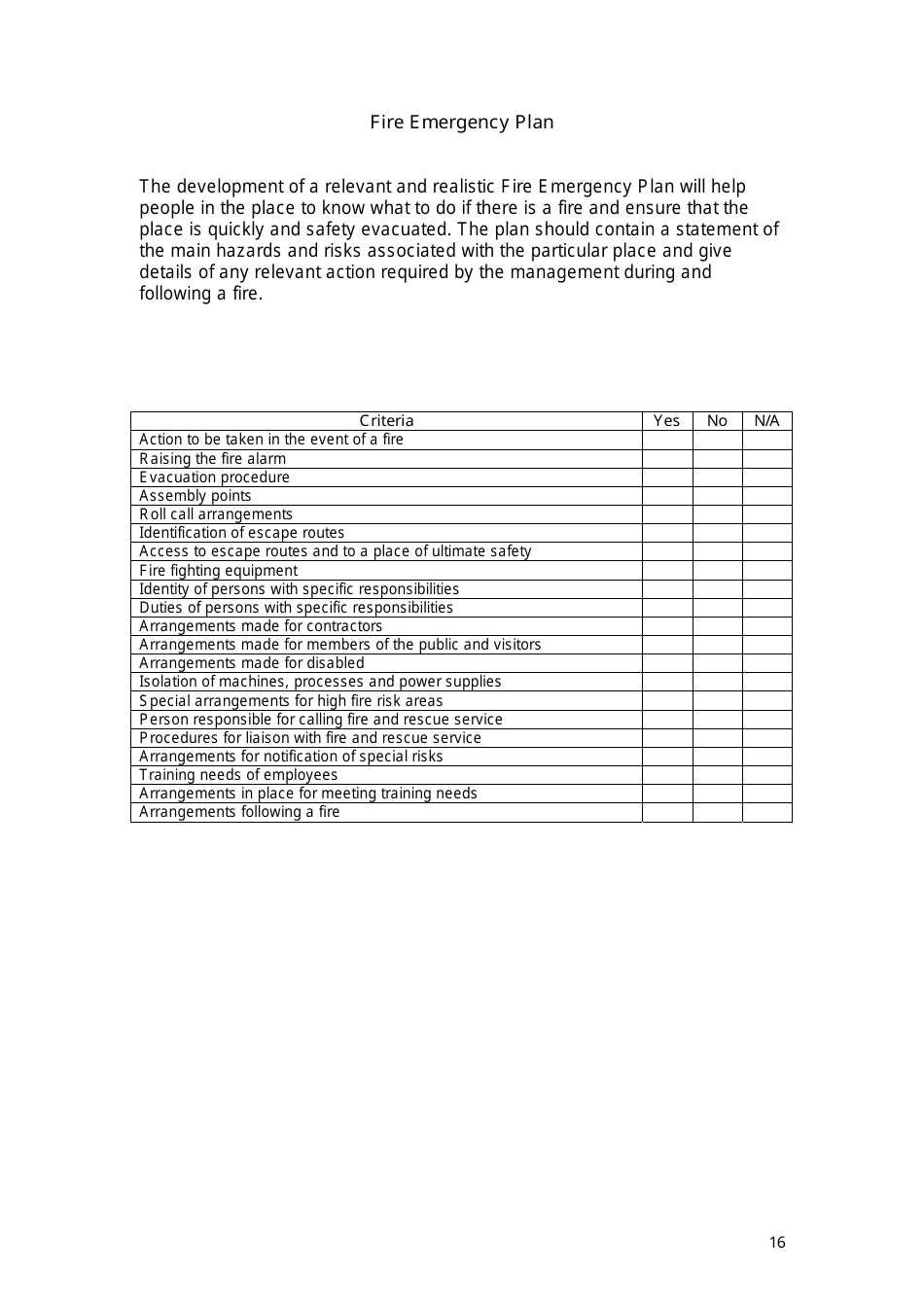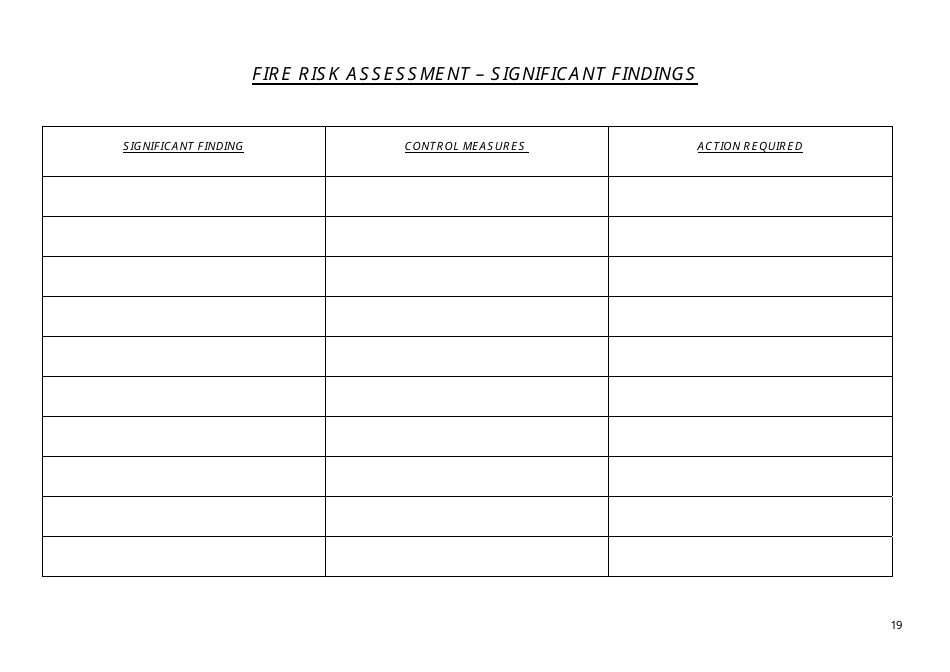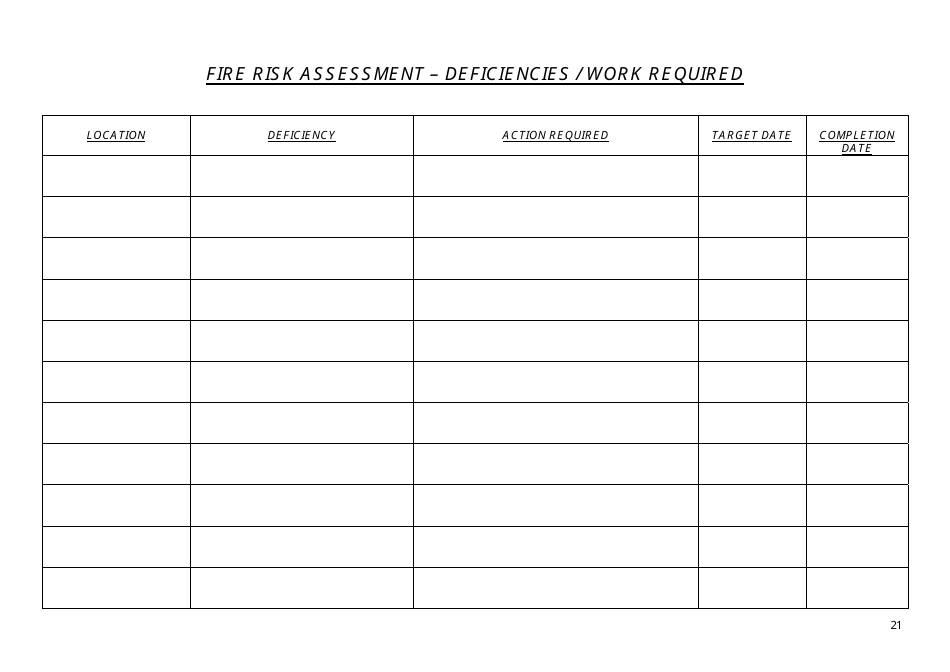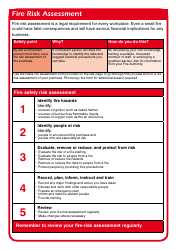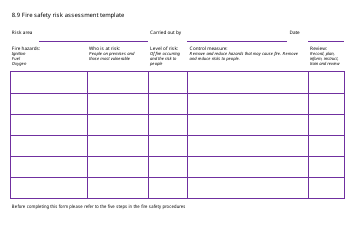Fire Risk Assessment Template - Humberside Fire and Rescue
The Fire Risk Assessment Template - Humberside Fire and Rescue is a tool used to assess and identify potential fire risks in a particular location or property. It helps to ensure that appropriate measures are in place to prevent and respond to fire emergencies.
FAQ
Q: What is a fire risk assessment?
A: A fire risk assessment is the process of evaluating potential fire hazards and the measures in place to prevent and react to fires.
Q: Why is a fire risk assessment necessary?
A: A fire risk assessment is necessary to ensure the safety of a building and its occupants, and to comply with fire safety regulations.
Q: Who can perform a fire risk assessment?
A: A qualified fire safety professional or a person with sufficient knowledge and experience can perform a fire risk assessment.
Q: What does a fire risk assessment involve?
A: A fire risk assessment involves identifying fire hazards, evaluating the risks, and implementing appropriate fire safety measures.
Q: What are some common fire hazards?
A: Common fire hazards include faulty electrical equipment, flammable materials, blocked escape routes, and inadequate fire suppression systems.
Q: What are some fire safety measures that can be implemented?
A: Fire safety measures can include installing smoke detectors, fire extinguishers, emergency lighting, and implementing fire evacuation plans.
Q: How often should a fire risk assessment be reviewed?
A: A fire risk assessment should be reviewed regularly, typically every one to three years or whenever there are significant changes to the building or its use.
Q: What happens if a fire risk assessment identifies significant risks?
A: If significant risks are identified, appropriate actions must be taken to reduce or eliminate those risks.
Q: Who enforces fire safety regulations?
A: Fire safety regulations are enforced by local fire departments and fire authorities.
Q: What are the consequences of not conducting a fire risk assessment?
A: Failure to conduct a fire risk assessment can result in legal penalties, increased insurance premiums, and, most importantly, increased risk to life and property.
